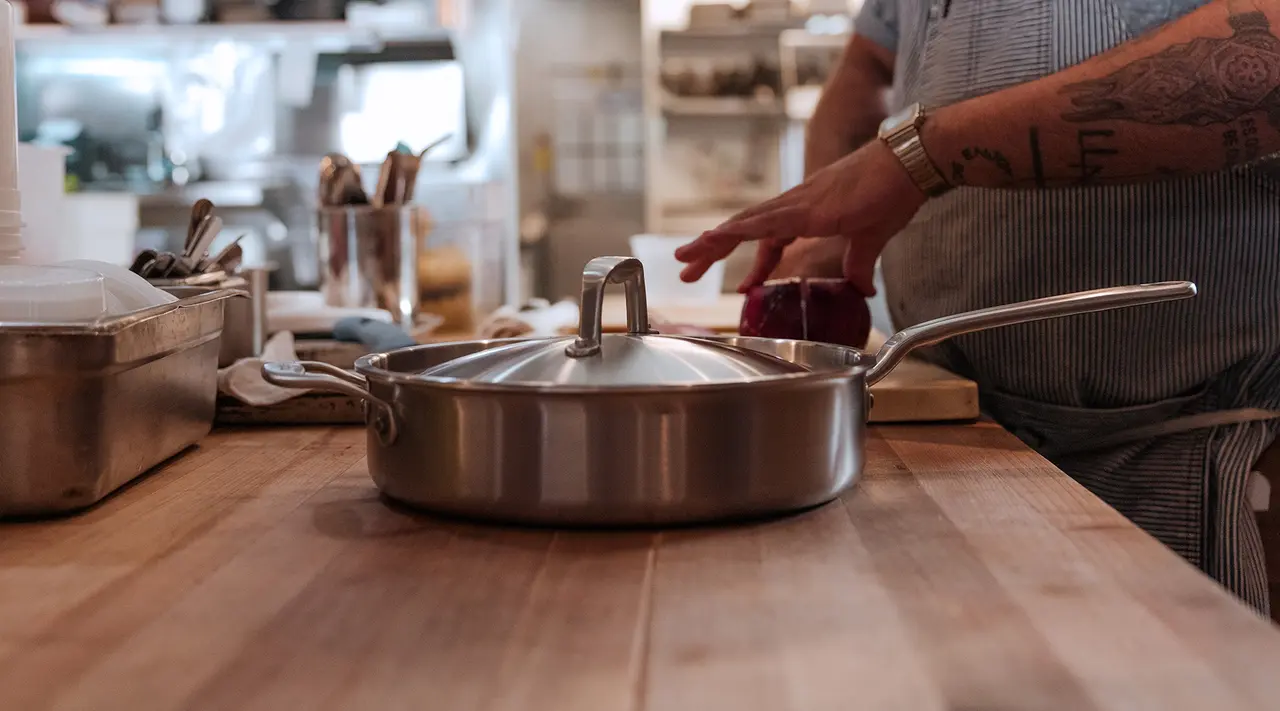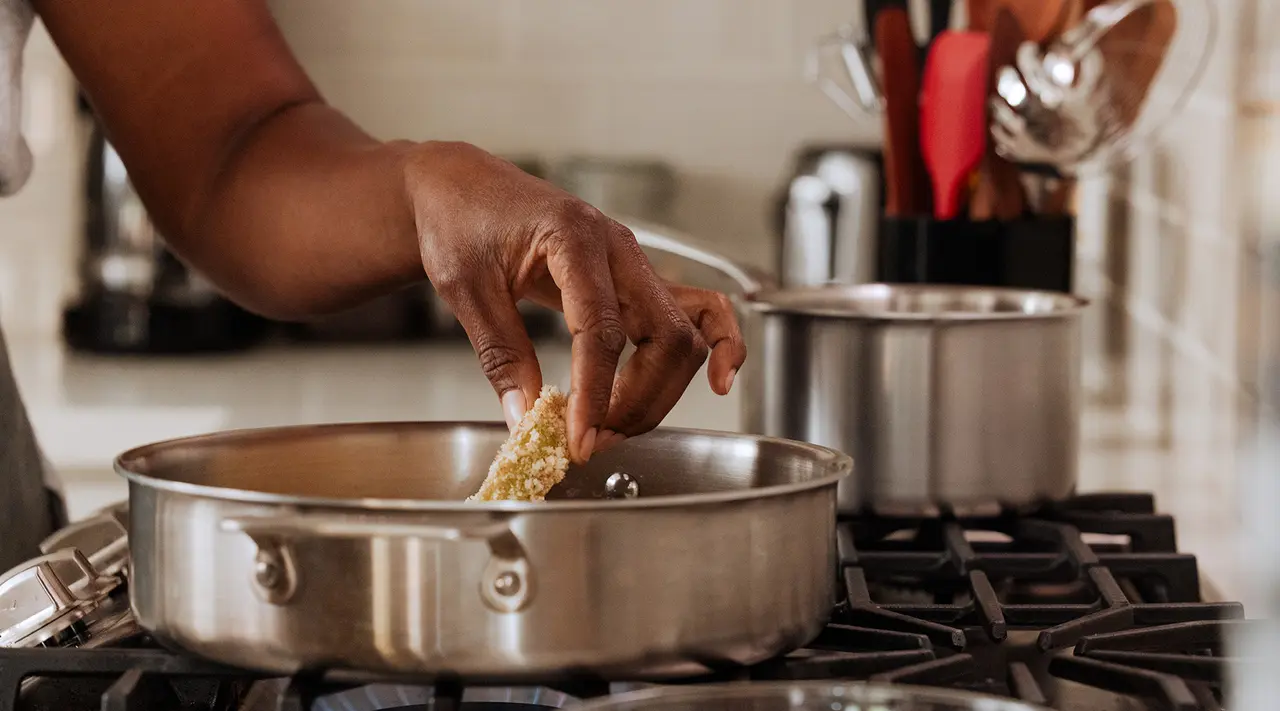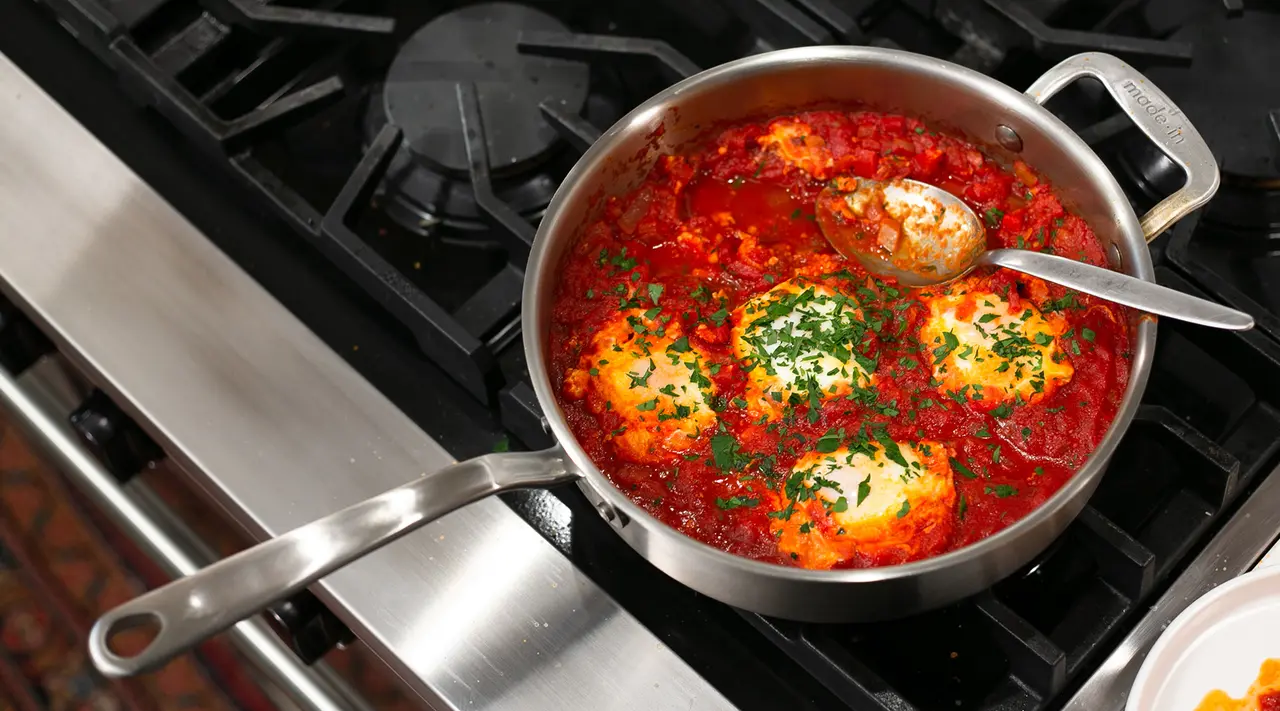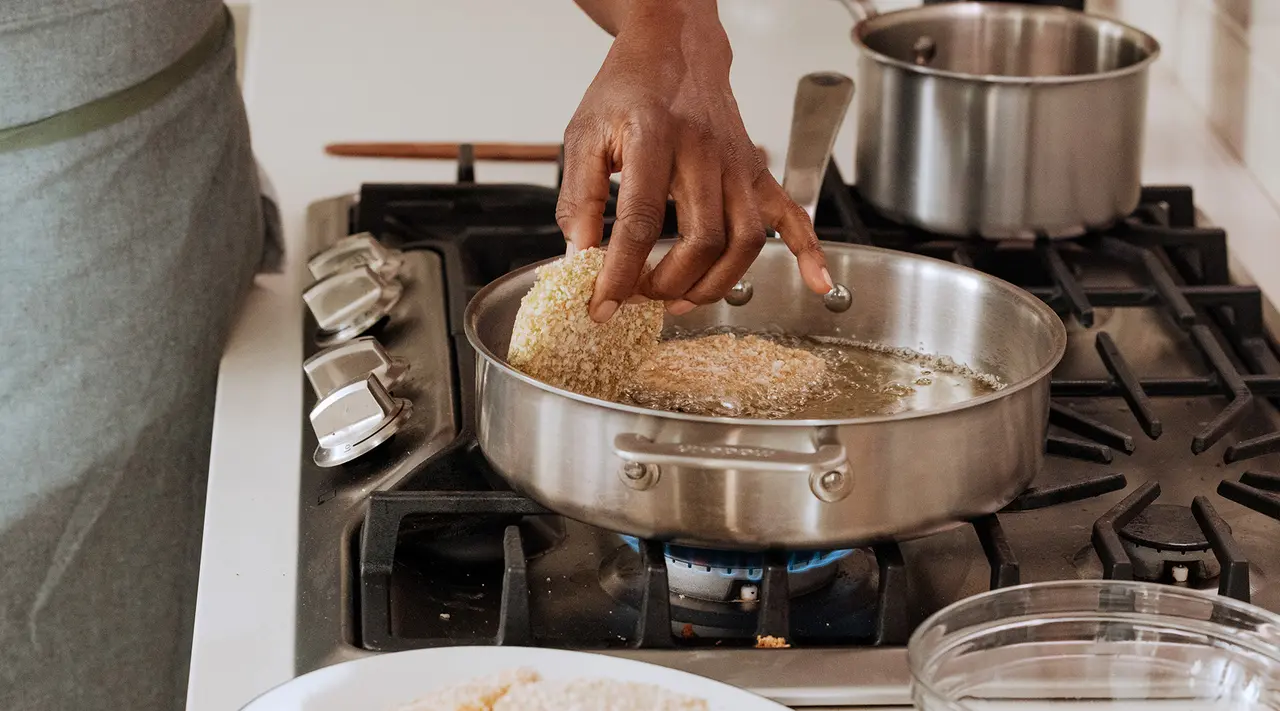If you’ve scanned a stovetop recipe lately, you’ve probably come across the instruction to preheat a sauté pan. But what exactly is a sauté pan, and what is it used for? This classic piece of cookware got its start in French cuisine. (In French, “sauté” means “to jump.”) You might sauté diced onions, carrots, and celery to use as the base for a soup, for example.
A sauté pan can be used for a wide variety of cooking scenarios, though, making it an essential piece of cookware. Let’s get into exactly why.
What Is a Sauté Pan?

The key design features of a sauté pan include a large surface area and low, straight walls to encourage browning. (Compare this to the sloped sides of a frying pan and the smaller surface area of a saucepan.) Most saute pans (including ours) typically feature a long handle and a smaller helper handle.
While the word “sauté” literally means to jump, in the kitchen, it means to cook something quickly in a small amount of hot fat. To sauté vegetables, for example, you’d warm about a tablespoon of oil over medium to medium-high heat, then add a single layer of chopped vegetables to the pan, tossing or stirring to coat them in fat and seasoning with salt, pepper, and other spices of your choosing.
That long handle proves useful here, as you can move the vegetables around with the flick of a wrist to ensure even browning. After a few minutes for soft vegetables and up to 15 for harder vegetables, you’ll have beautifully caramelized, crisp-tender veggies.
Sauté Pan Uses (Beyond Sautéing)

Beyond using your pan for its namesake, you can also use a sauté pan for a wide range of everyday cooking tasks.
Searing and Browning
The generously large, flat cooking surface and high sides of a sauté pan make it the ideal vessel with which to sear and brown proteins and other ingredients. You can confidently sear a steak before finishing it in the oven, brown ground turkey, or make crisp-edged seared mushrooms without worrying about overcrowding (which leads to steaming rather than searing).
Braising
Braising, which relies on relatively low heat and a tight-fitting lid that locks in moisture to slowly cook, works very well in a sauté pan with a lid. (Our Saute Pan comes with a single-layer Stainless Steel lid.) Braised short ribs, chicken thighs, chickpeas, salmon, or anything else that benefits from a low, slow cooking method work well in a sauté pan.
Shallow Frying
The sauté pan’s high sides make it ideal for shallow frying. You don’t have to worry about oil spilling over the edges or splattering everywhere, and our Saute Pan’s durable 5-ply clad construction keeps fat at just the right temperature. Use a sauté pan to shallow fry a few schnitzels or squash fritters.
Pan Sauces
After you’ve seared a nice juicy steak or pork chop in our Stainless Clad Saute Pan, you’ll be left with crispy, dark fond—and a sauté pan is the ideal tool for deglazing and making pan sauces with that fond. Make a wine reduction for the steak, or use apple cider for the pork chop. In minutes, you’ll have a thick, flavorful glaze to pour on top.
One-Pan Meals
A sauté pan’s large surface area and straight sides mean it’s great to use for one-pan meals, especially since our pan comes with a lid.) For a little inspiration, check out our recipes for the oh-so-customizable One-Pot Chicken and Rice and pantry-clearing Sesame Chickpeas with Broccoli.
Simmering and Reducing
The wide surface area of a sauté pan also aids in simmering and reducing sauces or stocks (think marinara, broth, and beyond). More surface area means sauces will evaporate more quickly, while the pan’s straight sides prevent spillage when stirring. On the sweeter side, you can also use a sauté pan to make a small batch of jam and other preserves.
Oven Use
Many sauté pans are also oven-safe, so you can even use them for baked dishes like finishing a frittata or baking a casserole.
How to Choose the Right Sauté Pan

There are a few things to keep in mind when picking out the right saute pan for you.
Material Considerations
Sauté pans come in all sorts of materials, including stainless steel, non stick, and ceramic. Which you choose depends on what types of food you cook most often. Non stick and ceramic are great for easy clean up, but shouldn’t be used over too high of heat. (Both our ProCoat Non Stick Saute Pan and Stainless Clad Graphite Saute Pan can handle up to 500F in the oven, and are best used primarily over low to medium-low on the stove.)
Stainless steel is a longer lasting choice that is great if you frequently sear proteins or otherwise need to deglaze a pan—stainless steel can stand up to a bit of scraping. Our Stainless Clad Saute Pan is oven-safe up to 800F.
Size Matters
Saute pans also come in different sizes, most often ranging from 3 to 6 quarts. Both our Non Stick Saute Pan and Stainless Clad Saute Pan are 3.5 quart, with a cooking surface diameter of 10.5 inches. This size is quite versatile, providing enough surface area for searing, frying, and so on, but if you often cook smaller or larger amounts of food, you’d likely want to seek out a smaller or large pan size.
Features to Look For
A lid is super useful to trap steam and aid in braising, provided it fits well—you’d be surprised how often they don’t. Ergonomic handles help for general comfort when cooking, especially if you’re using a wrist-flick to sauté. Also make sure the saute pan works on your stovetop (especially if you have induction). Our Non Stick Saute Pan and Stainless Clad Saute Pan are all induction compatible.
Ready to Shop?
Whether you’re sautéeing vegetables for a side dish or making a batch of end-of-summer ratatouille, our Saute Pans make a versatile addition to your cookware collection. Look through the different options and get ready for many tasty meals to come.































